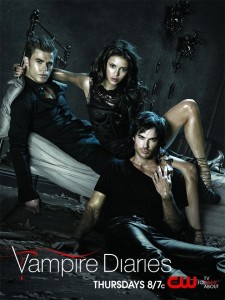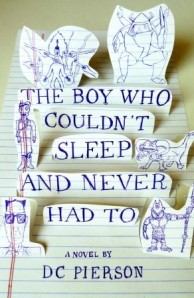…
You think you’re too good for “The Vampire Diaries.” I know you do. I know it because I was once you, so young and naive. So full of opinions on what is “good” television and why you couldn’t possibly watch something on the former WB, something so thoroughly overpopulated with ridiculously good-looking people. Your argument against it probably includes an offhand reference to Twilight, a reminder that you’re not 13 years old, and some lame excuse that you have better things to do. Let’s face it—we both know you don’t. And really, you’re just fighting fate.
It’s true, “The Vampire Diaries” has one of the more absurd premises you’ve recently heard: feuding vampire brothers both fall for the same mortal high school girl—and, oh yeah, everybody keeps diaries and stuff. And, sure, all of the witches and werewolves and werewolf-vampire hybrids and doppelgängers take some getting used to. You’re probably wondering what’s so great about the protagonist, Elena Gilbert, aside from the fact that she has pretty hair and is deep, or whatever, because she hangs out at the cemetery to write in her diary. And you might spend a couple episodes getting into it, maybe because you’re continually distracted by doing Google image searches of Ian Somerhalder before he darkened his hair, back when he was on “Lost.” But once you get hooked, and you will get hooked—it will sneak up on you, like an evil, centuries-old vampire slyly hanging out at a high school dance, and sink its teeth into your helpless mortal neck—you won’t be able to resist. You’ll breeze through the existing 60 plus episodes in less than a month, which is totally not embarrassing, okay? Totally. Not. Embarrassing.
And you’ll quickly understand that even though this is a show about vampires and love and looking hot even when you’re dead, it’s not another Twilight. It’s not another “True Blood” for that matter, and not just because a random passerby won’t mistake it for soft-core porn. For one thing, it is thrillingly plot-driven, focused not only on longing looks between a mortal girl and the boys who want to eat her but also real life-and-death-(and-undeath) situations. Everyone is in peril, all the time, and the enemies just as often come from within as from without. Action is constant: former adversaries became allies, former friends become foes, and sometimes former cheerleaders become creatures of the night who want to drain you of blood. Every episode is a roller coaster ride. Make that a roller coaster ride in the dark: you can never see what’s coming.
The first episodes set up a dramatic arc that a sane person—or, at least, someone not addicted to amphetamines—would assume could be resolved only over the course of a season (maybe more if your head writer is Veena Sud from”The Killing”). After all, Elena (Nina Dobrev) will need time to fall head-over-heels in love with vampire Stefan (Paul Wesley) before learning he’s a full-fledged, full-fanged predator, right? Well, since this is still a teen show we are talking about, and since, for fictional teens, a reasonably good first date will invariably result in the two protagonists proclaiming that they would die for each other, of course not. Elena quickly learns that Stefan is a vampire, and that he has an evil (but hot) vampire brother, but she decides she’s totally okay with it. Suddenly, it’s the two of them against the world, first taking on Stefan’s evil-but-hot (don’t forget hot!) brother Damon (Ian Somerhalder), but then moving on to even greater threats.
Basically, on “The Vampire Diaries” one scary villain has an even scarier villain behind him or her. Without giving away too much of the plot, I will mention that Damon is remaining in their hometown of Mystic Falls for a very specific reason, and that it has something to do with a vampire even more powerful (and treacherous) than he is. This person, in turn, has been on the run from an even more powerful vampire. And so on, and so forth. The plot twists are manifold, the mythology endless. A new mystery develops at every turn, forever feeding the addiction to find out what happens next. I was up to four episodes a day of this show when I watched the first two seasons on Netflix. That’s not an embarrassing personal failure—that’s just science. Don’t think this won’t happen to you. You’re smug, but so, so stupid.
So, to recap, you are not better than “The Vampire Diaries.” You may think you are, but try watching a few episodes and then giving up cold turkey. What’s that, you just found out about the secretive council of founding families that knows there are vampires living in their town? Oh, now you just discovered that Stefan and Damon’s former love, Katherine Pierce, looks exactly like Elena? Good luck trying to stop thinking about that while you go about your boring everyday duties like grocery shopping and explaining that your favorite tv shows are “Downton Abbey” and the news.
…I’m prettty sure everyone knows what “‘Downton Abbey’ and the news” is a euphemism for. You only wish Dame Maggie Smith were a centuries-old vampire…instead of, you know, just centuries old.




